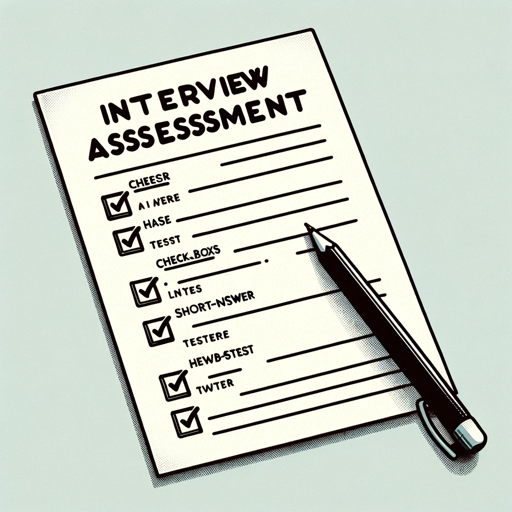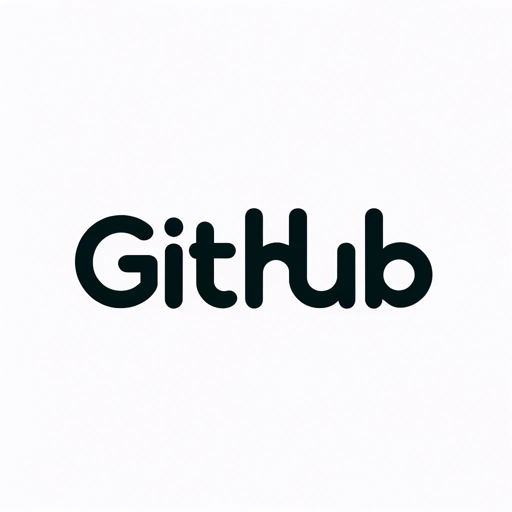前端架构面试-AI-powered front-end interview tool.
AI-powered tool for front-end mastery.
How do I optimize a website's performance?
What are the key differences between React and Angular?
Explain the concept of responsive design.
Can you review this JavaScript code snippet?
Related Tools
Load More
高级前端工程师助手
一名高级前端工程师级别的 AI 编程助手,精通各种前端技术,擅长代码修改、解释、优化和问题解决。

Advanced Front-end Dev Expert
Expert in JavaScript, HTML, CSS, and frameworks like React and Vue

模拟面试 - 技术面
解析简历信息、设计技术问题、模拟实际面试场景。展现您的充足准备,AI面试官助您斩获理想工作!

前端导师
经验丰富的前端工程师,用简单中文解答。

面试出题大师
根据您的招聘要求快速输出一套面试题

Software Engineer Behavioral Interview
Answers behavioral interview questions for software engineers
20.0 / 5 (200 votes)
Overview of Front-End Architecture Interview
The Front-End Architecture Interview (前端架构面试) focuses on assessing and discussing the structural design, best practices, and optimization techniques in front-end development. Its primary goal is to evaluate a candidate's understanding of how to build scalable, maintainable, and performant front-end applications. The architecture aspect delves into how the different components of a front-end application (like UI, state management, routing, and build systems) are structured to handle growth and complexity over time. For example, in an interview scenario, you might be asked to design the architecture of a large-scale e-commerce website that must handle millions of users while providing fast load times and a seamless user experience. In this case, understanding component reuse, code splitting, lazy loading, and using appropriate front-end frameworks are crucial.

Core Functions of Front-End Architecture Interview
System Design & Component Architecture
Example
In a real-world project, interviewees may be asked to design a reusable UI component library for a SaaS platform.
Scenario
During an interview, candidates may be asked how they would design a component architecture that supports reuse across multiple teams while ensuring flexibility and easy maintenance. This could involve using React’s component composition patterns, utilizing Storybook for isolated component development, and enforcing consistency via a design system.
Performance Optimization Strategies
Example
Reducing Time to Interactive (TTI) in a single-page application.
Scenario
Interviewers may present a scenario where a web application takes too long to load, and ask the candidate to propose architectural changes. The candidate may suggest implementing techniques such as server-side rendering (SSR) in Next.js, tree shaking to eliminate unused code, code splitting to load only essential JavaScript, and optimizing assets via lazy loading of images.
State Management and Data Flow
Example
Managing global state in a large e-commerce application using Redux or Context API.
Scenario
Candidates might be asked how they would manage application-wide state across multiple components and routes. The interview could focus on the benefits of using a central state management library like Redux, where state is immutable and changes are predictable, versus lighter solutions such as the Context API for simpler applications, along with strategies for optimizing state updates to avoid unnecessary re-renders.
Target Audience for Front-End Architecture Interview Services
Experienced Front-End Engineers
These are developers with 3+ years of experience who are preparing for senior-level or lead developer positions. They have a solid understanding of front-end development and are now focused on mastering large-scale application architecture. These users benefit from Front-End Architecture Interview services by gaining deeper insights into system design, performance improvements, and maintainability of complex applications.
Technical Leads & Architects
This group consists of seasoned engineers or managers overseeing front-end teams. They are responsible for defining the technical direction of projects, ensuring scalability, and making decisions on toolsets and frameworks. By using Front-End Architecture Interview services, they can sharpen their understanding of architectural patterns, learn to evaluate trade-offs in system design, and stay up-to-date with the latest trends in performance optimization and component-based architecture.

How to Use 前端架构面试
1
Visit aichatonline.org for a free trial without login. No need for ChatGPT Plus to access the tool.
2
Navigate to the 'Front-End Interview' section to explore a variety of curated content specifically focused on front-end development, architecture patterns, and best practices.
3
Use the search feature to find specific topics, such as 'React performance optimization', 'CSS architecture patterns', or 'JavaScript frameworks comparison'. This ensures that the tool surfaces relevant insights tailored to your needs.
4
Interact with the tool by posing specific questions, code snippets, or problem statements. For example, you can ask for a detailed explanation of 'Virtual DOM' or request the best practices for structuring large-scale web applications.
5
Use the provided Q&A, articles, and interview resources to build your understanding, prepare for interviews, or refine your architectural decisions. Save or bookmark key insights for future reference.
Try other advanced and practical GPTs
GitHube Copilet
AI-powered code completion tool.

github助手
AI-powered GitHub assistant

Github Repository Creator
Effortlessly create and manage repositories with AI.

GitHub助手
AI-Powered GitHub Resource Assistant

Bias Bee - version RCT
AI-powered bias detection for clinical trials

The Bee Keeper
Empower Your Career with AI Precision

Ai Web Browser
AI-powered tool for fast, smart research

Math Solver
AI-powered solutions for all your math problems.

MATH
AI-Powered Math Solutions at Your Fingertips

Math Mentor
AI-powered tool for mastering math.

File Converter & PDF Compressor ⚡
AI-powered file conversion and compression.
File Convert
AI-Powered File Conversion Tool

- Learning
- Code Review
- Interview Prep
- Skill Assessment
- Team Training
Q&A About 前端架构面试
What makes 前端架构面试 unique?
前端架构面试 specializes in providing in-depth front-end architecture insights, catering to both developers and interviewers. It offers detailed guidance on front-end technologies, design patterns, and best practices, making it highly suitable for complex technical interviews and project design discussions.
Can I use 前端架构面试 for non-interview purposes?
Yes, the tool can be used for a variety of scenarios beyond interviews, including personal development, team training, and as a reference for building scalable front-end applications. It offers content suitable for enhancing both fundamental and advanced front-end skills.
What type of topics are covered by 前端架构面试?
It covers a broad range of topics such as HTML/CSS fundamentals, JavaScript deep dives, state management solutions in React and Vue, micro-frontends, CSS-in-JS patterns, and performance optimization techniques. The focus is on practical, real-world scenarios commonly encountered in front-end development.
How does 前端架构面试 support interview preparation?
The tool provides curated Q&A sets, code challenges, and architectural problem-solving examples. It also offers insights into common interview patterns, key areas of focus for front-end roles, and guidance on answering complex scenario-based questions effectively.
Are there prerequisites to using 前端架构面试?
There are no prerequisites, but having a basic understanding of front-end technologies like HTML, CSS, and JavaScript will help you make the most of the tool. Advanced topics and architectural patterns are also covered, making it useful for both beginners and experienced developers.